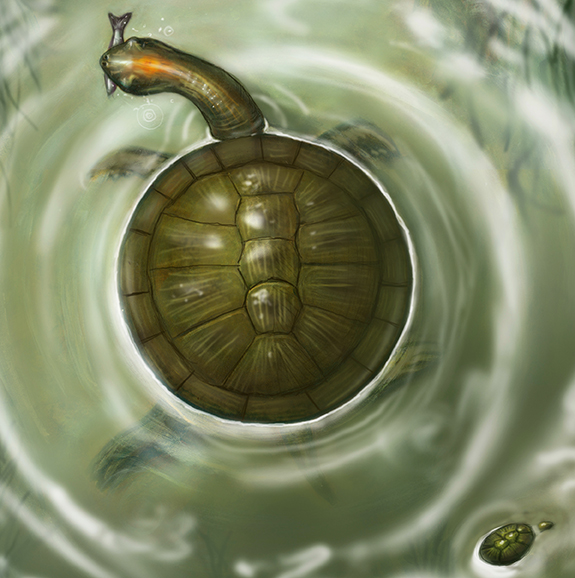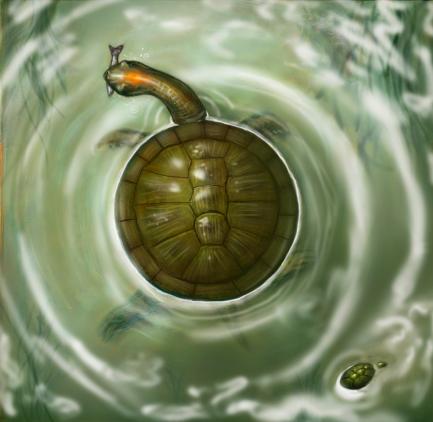Researchers dig up a Puentemys mushaisaensis, a new species of fossil turtle that lived 60 million years ago in what is now northwestern South America, discovered and described in by paleontologist Carlos Jaramillo’s group at the Smithsonian Tropical Research Institute in Panama. The mos
Fossil Turtle from Colombia Is Round Like a Car Tire
Paleontologist Carlos Jaramillo’s group at the Smithsonian Tropical Research Institute in Panama and colleagues at North Carolina State University and the Florida Museum of Natural History discovered a new species of fossil turtle that lived 60 million years ago in what is now northwestern South America. The team’s findings were published in the Journal of Paleontology.
The new turtle species is named Puentemys mushaisaensis because it was found in La Puente pit in Cerrejón Coal Mine, a place made famous for the discoveries, not only of the extinct Titanoboa, the world’s biggest snake, but also of Carbonemys, a freshwater turtle as big as a smart car.
Cerrejon’s fossil reptiles all seem to be extremely large. With its total length of 5 feet, Puentemys adds to growing evidence that following the extinction of the dinosaurs, tropical reptiles were much bigger than they are now. Fossils from Cerrejon offer an excellent opportunity to understand the origins of tropical biodiversity in the last 60 million years of Earth’s history.
The most peculiar feature of this new turtle is its extremely circular shell, about the size and shape of a big car tire. Edwin Cadena, post-doctoral fellow at North Carolina State University and lead author of the paper, said that the turtle’s round shape could have discouraged predators, including Titanoboa, and aided in regulating its body temperature.
The width of the turtle’s shell probably exceeded the maximum expansion of the Titanoboa’s mouth. Its circular, low-domed shape would have increased the area of the body exposed to the sun, helping the cold-blooded turtle warm to a temperature at which it was more active.
The Smithsonian Tropical Research Institute, headquartered in Panama City, Panama, is a unit of the Smithsonian Institution. The Institute furthers the understanding of tropical nature and its importance to human welfare, trains students to conduct research in the tropics and promotes conservation by increasing public awareness of the beauty and importance of tropical ecosystems. Website: www.stri.si.edu.
# # #
SI-329-2012
Reference: Cadena, E.A., Bloch, J.I., and Jaramillo, C.A. 2012. New Bothremydid turtle (Testudines, Pleurodira) from the Paleocene of Northeastern Colombia. Journal of Paleontology, 86(4):689-699.
Authors and Institutions:
Edwin A. Cadena, Florida Museum of Natural History, North Carolina State University
Jonathan I. Bloch, Florida Museum of Natural History
Carlos A. Jaramillo, Smithsonian Tropical Research Institute
Beth King
202-633-4700 x 28216



